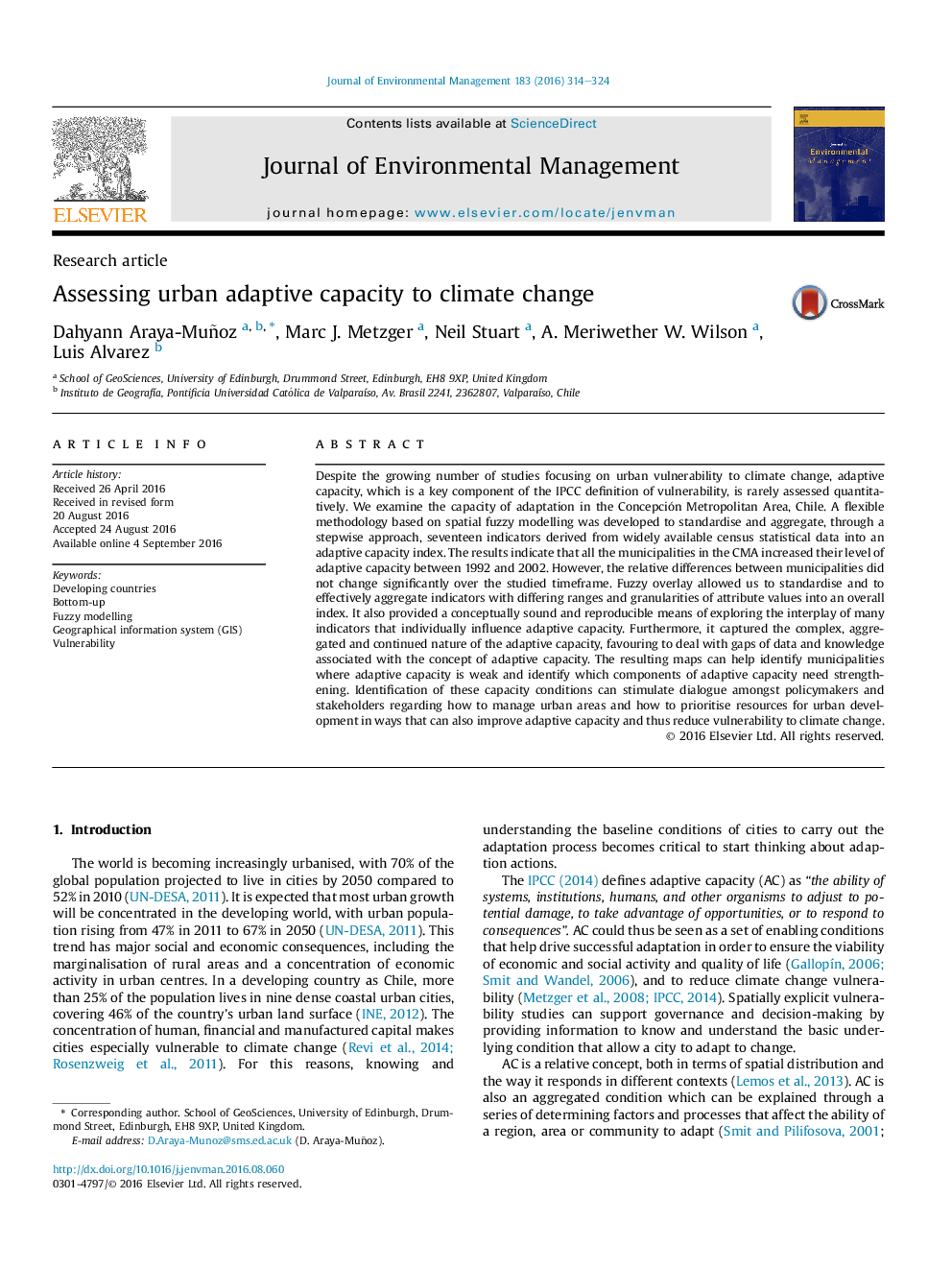| Article ID | Journal | Published Year | Pages | File Type |
|---|---|---|---|---|
| 5117316 | Journal of Environmental Management | 2016 | 11 Pages |
â¢The municipal spatio-temporal distribution of adaptive capacity was tracked.â¢Fuzzy modelling allows flexible standardization and aggregation by partial membership.â¢ArcGIS allows transparency, straightforward aggregation and flexible map combination.â¢In the studied period, all municipalities increased their adaptive capacity.â¢Relative differences in adaptive capacity between municipalities were maintained.
Despite the growing number of studies focusing on urban vulnerability to climate change, adaptive capacity, which is a key component of the IPCC definition of vulnerability, is rarely assessed quantitatively. We examine the capacity of adaptation in the Concepción Metropolitan Area, Chile. A flexible methodology based on spatial fuzzy modelling was developed to standardise and aggregate, through a stepwise approach, seventeen indicators derived from widely available census statistical data into an adaptive capacity index. The results indicate that all the municipalities in the CMA increased their level of adaptive capacity between 1992 and 2002. However, the relative differences between municipalities did not change significantly over the studied timeframe. Fuzzy overlay allowed us to standardise and to effectively aggregate indicators with differing ranges and granularities of attribute values into an overall index. It also provided a conceptually sound and reproducible means of exploring the interplay of many indicators that individually influence adaptive capacity. Furthermore, it captured the complex, aggregated and continued nature of the adaptive capacity, favouring to deal with gaps of data and knowledge associated with the concept of adaptive capacity. The resulting maps can help identify municipalities where adaptive capacity is weak and identify which components of adaptive capacity need strengthening. Identification of these capacity conditions can stimulate dialogue amongst policymakers and stakeholders regarding how to manage urban areas and how to prioritise resources for urban development in ways that can also improve adaptive capacity and thus reduce vulnerability to climate change.
